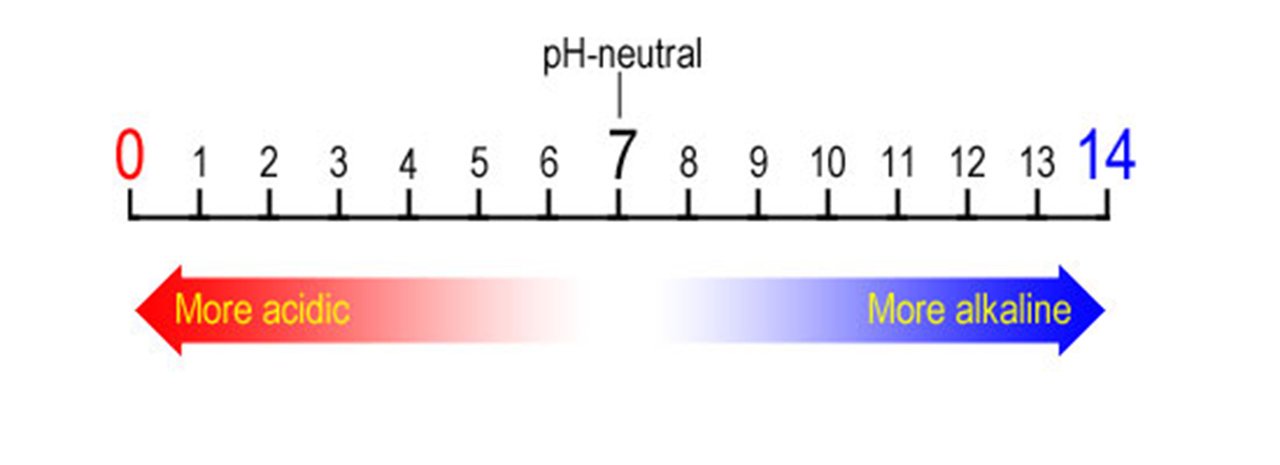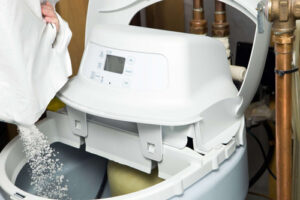Pure water should have a neutral pH level. Unfortunately, the water that enters your home is not always pH neutral. In some cases, water is highly acidic and in other cases, water is more alkaline. What does that mean for your home’s plumbing? Let’s start with an understanding of pH.
What is pH
pH stands for potential of hydrogen. pH is measured on a scale to describe the acid or basic level of a solution. The scale has measurements from 0 to 14, and simply measures the concentration of hydrogen ions in a substance, like water. The median is 7, which describes a neutral substance. Measurements lower than 7 are considered acidic with 0 registering the most acidic measurement. Conversely, measurements higher than 7 are considered basic (or alkaline) with 14 as the highest measure of alkalinity.
Ideally, your home’s water should be pH neutral. At this level water is in its most pure form. The EPA recommends public water systems maintain a pH between 6.5 and 8.5, but does not actively regulate it. Water that tends toward acidic levels or alkaline levels can cause problems to your health and the health of your home’s plumbing over time.
Effects of pH
Acidic water effects:
- Corrosion—High acidity causes corrosion in metal pipes that can lead to leaks and leaching of metals into your water. Depending on the amount of metal in your water, this can cause harmful health effects.
- Staining—Acidic water can cause staining on sinks and plumbing fixtures. It can even discolor laundry. A blue green stain will result when copper pipes corrode while galvanized steel or iron pipe corrosion may create rust-colored stains.
- Leaching— Corrosion of plumbing can cause metal to leach (iron, manganese, copper, lead and zinc). Exposure to metals results in odorous or bad tasting water as well as health problems.
- Pinhole leaks—Acidic water can even cause pinhole leaks in copper plumbing. Long-term exposure to high amounts of copper in water could cause serious health problems, including liver or kidney damage. Even short-term exposure can cause stomach problems, like nausea and vomiting.
Alkaline water effects:
Water with high alkalinity can cause similar effects as acidic water.
- Hard water—Basic water can be hard water, as well, because high concentrations of calcium are what causes the water to be basic. If your water is very basic, check for hardness.
- Scale—Water that has a high pH causes buildup in pipes and on plumbing fixtures resulting in less efficient plumbing systems. Scale can also cause problems with buildup on shower doors.
- Water heaters—Alkaline water causes the most noticeable effect on gas water heaters. The scale build up decreases the efficiency of the heating element.
It’s important to address issues with water quality before they create bigger—and more expensive—plumbing problems.
Addressing pH Issues
It’s simple to complete a pH test with an in-home test kit. A water treatment expert, however, will conduct a more thorough analysis of your water. Your local water treatment company can test for myriad substances and contaminants.
An acid neutralizing filter is typically the best treatment for water with low pH (acidic water). The most common material used to neutralize water is calcite. For very acidic water, consider adding a chemical feed pump to balance the water. Most often, soda ash is added to your water via the chemical feed pump. In situations with acidic water, we suggest testing for lead and copper to avoid health issues.
Basic water is usually treated with a chemical feed pump to balance the water with an acid. When hard water is a problem, a water softener that treats water at the point of entry in your home will correct water issues throughout your home. A softener like the Hague WaterMax® is a comprehensive solution for correcting hard water, and will lead to savings in the future.
Contact the water experts at Hague for a free estimate to find out what’s in your water!





